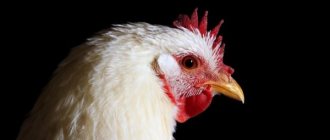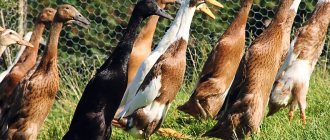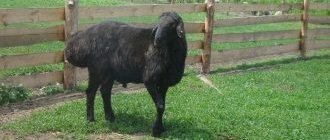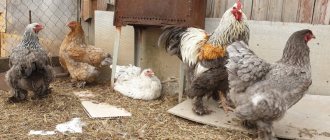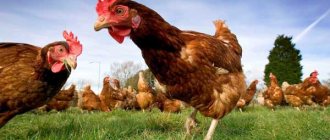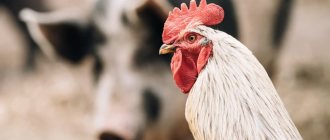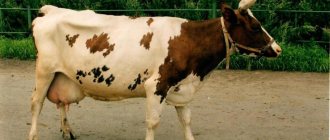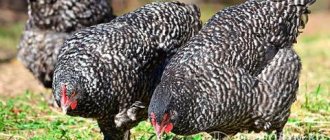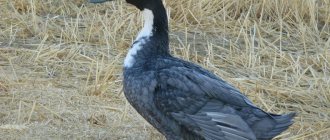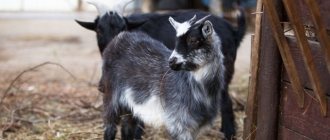Domestic types of chickens are distinguished by their endurance and undemanding conditions of keeping; their productivity depends little on the climate. Today, one of the most popular breeds on the Russian market is the Zagorsk salmon, bred by Soviet scientists.
The Zagorsk salmon breed of chickens is the most in demand on the Russian market.
How the Zagorsk salmon breed was developed
Selection work began in 1950 by employees of the All-Union Poultry Research Institute in Zagorsk (Sergiev Posad). At the first stage, the Russian white breed was crossed with New Hampshire, Rhode Island red and Yurlovsky vocal chickens. The first generation crosses became more productive and hardy. To consolidate the positive properties of the hybrid birds, they were again crossed with Rhode Island Reds and Yurlovsky Vocals.
Selection was carried out in a closed population, where the family selection method was practiced for a combination of high egg production, muscularity and endurance. As a result, white and salmon breeds were identified, named after the color of their plumage.
The first was used to breed Moscow white chickens, and the second was continued to be improved. The basic standards of the Zagorsk salmon line were officially established in 1955, after which it was included in the state register.
Where can I buy in Russia?
Where the Zagorsk breed was bred, it is sold. Successfully. And, basically, not to private individuals, although the details need to be clarified. After so many decades, the Institute was reorganized into Genofond LLC, and its employees continue to do the same (favorite!) business: selection and raising of domestic animals, in particular chickens.
For those interested, we publish contact information:
Address: Russia, Moscow region, Sergiev Posad, st. Maslieva, 44. Contact numbers (faxes); +7 (496) 546-19-20.
Breeding work to improve the breed is carried out by the Federal State Unitary Enterprise "Gene Pool" of the Russian Agricultural Academy, located in St. Petersburg.
Address: 196625, St. Petersburg, RP Shushary, temporary storage warehouse Detskoselsky, territory of VNIIGRZh. Contact phone: +7 (812) 476-85-56.
Appearance of birds
The appearance of salmon chickens cannot be called unusual. On the contrary, these birds share many characteristics with other species, and for this reason confusion often arises. For example, the Zagorsk calico breed has a similar body structure and plumage color, so it is often mistaken for salmon. To avoid mistakes in determining the breed, you should study in detail the description of the main features of birds.
Exterior of chickens
The following conformation standards have been established for the breed:
- the head is medium, slightly rounded;
- orange eyes;
- beak yellow, slightly curved;
- the comb is leaf-shaped, the earrings and earlobes are red;
- neck of medium length, slightly thickened;
- the body is deep, elongated;
- the back is straight and wide;
- convex chest;
- yellow skin;
- legs of medium length, lacking feathers.
The characteristic salmon color is present only in females. Roosters have predominantly black and white plumage with red-brown splashes.
Differences between males and females
The sex of chicks can be determined at an early age. On the second day of life, chickens develop pink-gray spots or stripes on their backs. After the first week, the wing plumage of females becomes creamy in color, and dark feathers begin to appear in roosters.
The wings of adult chickens are colored soft pink. Light brown shades predominate on the stomach, and white patches are visible in the neck area. A short black ponytail completes the look.
Males are distinguished by a more contrasting color: the belly and chest are covered with black feathers, the collar is white, the back is brown with a reddish tint. The black tail is slightly larger than that of females. The rooster's head is decorated with a bright red leaf-shaped comb with 4-5 teeth, lobes and a beard.
In chicks, sex can be determined after the first week of life.
Feeding
To feed Zagorsk chickens, you can use ready-made mixed feed, but you should not overuse it - it can cause obesity in the birds. You can add crushed and whole sprouted grains (wheat, millet, barley) to the diet; vegetable supplements, herbs and protein supplements are required.
- Stern
- Recipes
- Supplements
Compound feed pk-1
Description of food for egg breeds. Instructions for feeding laying hens
Read
Compound feed pk-2 and pk-3
Mineral and vitamin compositions, feeding standards
Read
Compound feed pk-4
Used to feed laying hens aged 15-17 weeks
Read
Compound feed pk-5
Composition and instructions for feeding broiler chickens
Read
Purina® Pro
Important differences from the previous line, application patterns Start, Growth, Finish
Read
Barley and wheat for laying hens
Germination and steaming of barley and wheat for chickens: how to do it correctly and how to give it to laying hens
Read
Wheat for broilers
Rules for feeding broiler chickens with wheat. Dosage for chickens from the second day of life and adult birds
Read
Mash
Making mash for broilers at home
Read
Rice and buckwheat
How and in what form you can use rice and buckwheat to feed chickens. Standards for adult birds and chickens
Read
Bread
What kind of bread can you feed chickens and how to do it correctly
Read
Fish
The product is given in limited quantities: overfeeding can cause serious harm to the bird
Read
Chalk
Chalk as a food additive for chicken feed. Feeding standards for chickens, young animals and laying hens
Read
Meat and bone meal
Meat and bone meal is a mandatory additive for feeding chickens, containing protein and fats of animal origin.
Read
Fish fat
How to give fish oil to chickens, layers and broilers. What are the benefits of the drug and are there any contraindications?
Read
Limestone
Limestone (dolomite) flour in the diet of chickens. Advantage over chalk and feed shell
Read
Salt
Daily dosage of salt for adult birds and young animals and cases of unwanted use
Read
Characteristics of Zagorsk salmon
Like many “old” breeds, the Zagorsk salmon is inferior in productivity to modern crosses. However, the characteristics of these birds fully satisfy the needs of strong households and farms. Salmon fish have good egg production and quickly gain weight.
Egg production of birds
Chickens mature early: the first clutch occurs when they reach the age of 4-6 months. At first, the hen produces small to medium-sized eggs with strong, light brown shells. Over time, they become larger and reach a weight of 60-89 g, and in some cases more. Adults produce up to 180-200 eggs annually.
Meat productivity of chickens
The breed is characterized by high meat productivity. The chicks quickly gain weight, and by 5 months the weight of the gutted carcass is 1.5 kg. Adult females reach 2.5-2.7 kg, and roosters - 3.0-3.5 kg. The meat is fatty, has a delicate texture and a pleasant taste.
Hatching instinct
Zagorsk chickens have a developed maternal instinct, which is typical for individuals of heavy breeds. They rarely leave the nest during the incubation period, and after the chicks hatch, they care for and train them.
About reviews
Private owners in villages and farmers who have a lot of chickens of this breed note that the birds are highly resistant to various diseases, are frost-resistant, and eat the food offered by their owners. If the food improves, then after some time the eggs become larger and the meat tastes better.
From childhood, roosters are clearly distinguishable from hens. The latter have a dark stripe down their back. When the chicks are 14 days old, they begin to grow feathers well. Those with dark wings are cockerels, and those with lighter wings are hens.
If there is a rooster or several in the flock, then it is 100% that they will fertilize all the hens. You can take any eggs and put them in an incubator, waiting for the chicks to hatch. Babies grow quickly. They are balanced and do not peck each other until they bleed.
Feedback from the owners is positive. Birds are smarter than many others, balanced. They eat what their owners offer them and quickly gain weight. Owners are pleased with the high egg production of laying hens.
Disadvantages include mischief, but it manifests itself due to the intelligence of the birds. It’s also bad that chickens are strong and fly high. If the fence is medium, then they will overcome it and go to their neighbors to feast on worms and grains, which will make them unhappy.
The owners note that adult chickens rarely get sick, and young chickens, if there is no virus in the chicken coop and eat well, survive 100%. With a good appetite, the chicks quickly gain weight. To avoid epidemics, the owner must periodically disinfect the chicken coop and remove excrement and change the water daily.
Poultry Temperament
Salmons get along well with their fellow tribesmen and can be kept in the same chicken coop. When several roosters live in a flock, clashes may arise between them, which quickly fade away. If the male is pugnacious, he is isolated from other individuals. Birds treat their owners kindly, but can attack strangers if threatened.
Chickens are very energetic and prone to escape. If beds with plantings come into their field of vision, they are able to fly over a 1.5-meter fence or make a dig.
Incubation
Breeding chicks of the Zagorsk breed is possible using an incubator. During incubation, it is important to observe the temperature regime: for the first 11 days it is necessary to maintain a temperature of 37.7 degrees, the next 7 days - 37.1, another 3 days - 36.9 degrees. If the temperature is not reduced during incubation, chicks may be born very weak or die.
Table of temperature and humidity modes
| Period |
